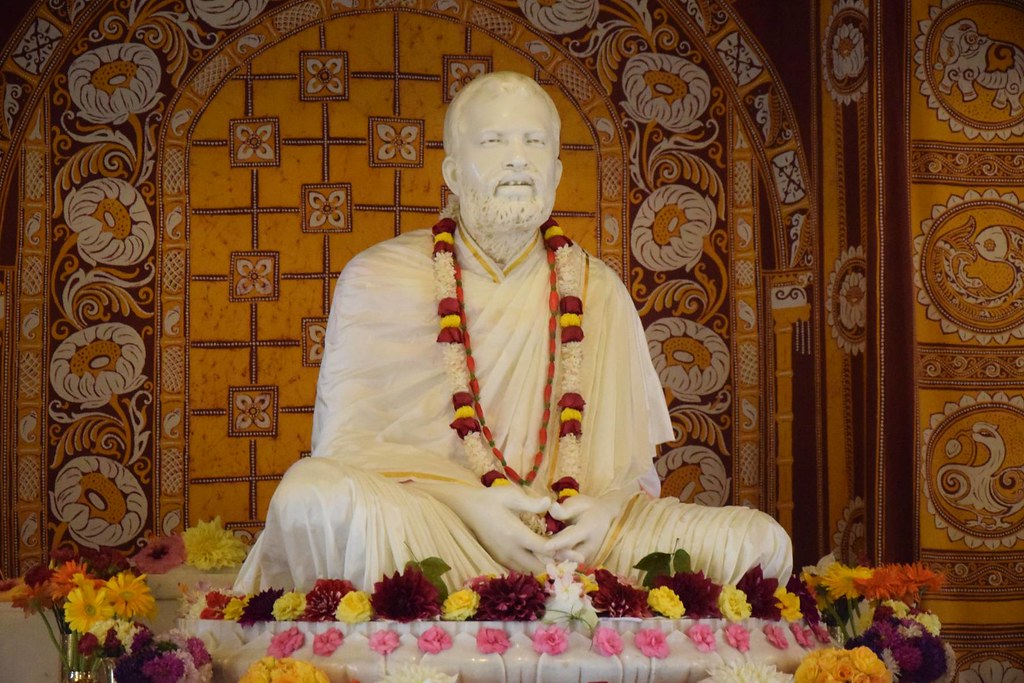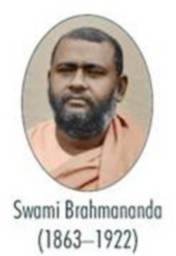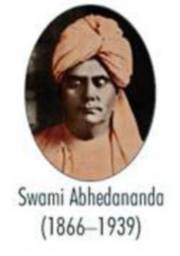—Sri Ramakrishna’s Teachings
यो ब्रह्माणं विदधाति पूर्वं यो वै वेदांश्च प्रहिणोति तस्मै।
तं ह देवमात्मबुद्धप्रकाशम् मुमुक्षवे शरणमहम् प्रपद्ये । |
Om yo Brahmanam Vidadhati purvam
Yo Vai Vedanshcha prahinoti tasmai
Tam ha devatmaatmabuddhihprakasham
Mumukshurvai Sharanamaham Prapadye.
He who in the beginning created Brahma and delivered the Vedas to Him, in that Deva (the Shining, Divine Being) do I, the seeker of liberation, take refuge.
ॐ असतो मा सद्रमय तमसो मा ज्योतिर्गमय
मृत्योर्मा अमृतं गमय ।।
Om asatoma sadgamaya, Tamasoma jyotir gamaya Mrityorma amritam gamaya
Om, lead me from the unreal to the Real; lead me from darkness [of ignorance] to Light [of Divine Knowledge], lead me from death to Immortality.
Self-surrender in the Path of Bhakti
Sharanagati or prapatti, often translated as surrender or self-surrender, is an attitude of mind that enables the sadhaka to directly intuit the Supreme Reality as an overwhelming Divine Presence that is the acme of spiritual attainment in the path of Bhakti. Interestingly, self-surrender to God is considered not so much as means to the attainment of the ultimate goal of mukti or liberation, but selfsurrender in itself is the ultimate goal and is synonymous with mukti. Thus, self-surrender is at once the means as well as the goal. In this sense, it has been described as the surest, quickest and easiest of spiritual practices by Bhakti Acharyas like Ramanuja.
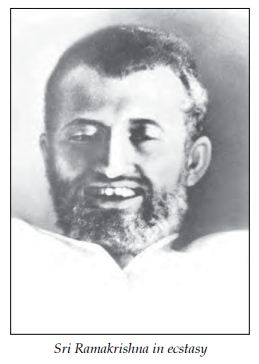
Every one of the Divine Incarnations (called Avataras) has taught Sharanagati or Prapatti as the highest form of sadhana, at once easiest and quickest. Sri Krishna’s exhortation to Arjuna, his dear friend and disciple, to take refuge in Him after having relinquished all other pursuits, is well known. (Gita, 18.66). Jesus the Christ said, ‘Come unto Me, ye that are weary and heavy-laden, I will give thee rest.’ Also, ‘I am the Goal and I am the Way.’ Sri Ramakrishna revealed and declared himself as the Avatar, the Divine Incarnation, openly and loudly, on the famous Kalpataru Day, the first of January 1886. Swami Saradananda, in the famous biography of Sri Ramakrishna that he christened as Sri Sri Ramakrishna Lilaprasanga (literally meaning, Of the Divine Play of Sri Ramakrishna), chooses to call this day not so much as the Kalpataru Day, but as ‘Day of bestowal of freedom from fear through revelation of Himself as an Avatar or Divine Incarnation.’ Sri Ramakrishna taught his disciples and intimate devotees (as told by Mahendra Nath Gupta, who styled himself as M, the recorder of Sri Ramakrishna’s immortal Gospel) the secret of self-surrender in the following words:
Just contemplate, think of, ‘this place’ (which is the way that Sri Ramakrishna would refer to himself, avoiding the phrases, ‘I’, ‘me’ or ‘mine’) and nothing else needs to be done. Whatever spiritual practices you need to do shall be got done through you at the right time. Whoever thinks of ‘this place’ inherits all the wealth of ‘this place’ just as a child inherits his father’s wealth.1
M, who was narrating this touching assurance of the Avatar of this age, added:
Do you know what his wealth is? It is jnana-bhakti, viveka-vairagya, shanti-sukha, premasamadhi (meaning, knowledge and devotion, discrimination and dispassion, peace and joy, love for God and ultimate union with God).2
In the path of Bhakti, surrender is the acme of spiritual realization as well as the supremely powerful path as well. The individual aspirant loses himself in the bliss of union with his Beloved God, his own ego melting away and getting reduced to zero. There being no two entities in this realization, it is in a sense the Advaita anubhuti (non-dual realization) that is considered the highest in the path of Jnana (Knowledge).
Sri Ramakrishna’s illustration in this context is so telling: A salt doll went to measure the depth of the ocean. The moment it entered the ocean, it just melted away and became one with the ocean. The individual ego that is the basis of name and form which forms the individuality vanishes and God alone remains as the one Reality. Call it Advaita realization if you like.
The devotees of God feel an ineffable sweetness, a transcendental bliss, in this union of the individual self (jivatman) with the Supreme Self (paramatman) and are supremely glad to lose their individuality in the Infinitude of their Beloved God. Merging of the individuality of the Jivatman with the Supreme Paramatman which the devotee-Jiva likes to conceive as the Beloved Ishwara is the Goal of Bhakti and self-surrender is the means to the attainment of such a union. Since there is no hiatus between the devotee’s self-surrender and the union with God, self-surrender is both the means (sadhana) as well as the Goal (sadhya). This makes it a ‘direct, infallible, easy and eternal path’—pratyakshavagamam dharmyam susukham kartumavyayam as Sri Krishna teaches (Gita 9.2).
Self-surrender in the Path of Jnana
We often think of self-surrender as belonging to Bhakti Marga (the path of Devotion). Interestingly, self-surrender belongs no less to Jnana Marga (the path of Knowledge) as to the Bhakti Marga. How? What does a Jnani ultimately achieve? Oneness with the Ultimate Reality in the form of Supreme Truth. The nature of the Ultimate Reality has been described in Jnana Marga as Sat-Chit-Ananda Swarupa (that is, Reality in essence, is Existence-Knowledge-Bliss, or Truth-Awareness-Joy). The Ultimate Reality can be realized through any of these aspects— Sat or Chit or Ananda. Whereas Bhakti Marga emphasizes the Ananda or Bliss aspect, Jnana Marga focuses on the Chit or Pure Awareness aspect. Jnana Margins of the type of Ramana Maharishi in the modern times and Ashtavakra in the ancient times emphasized the Sat or Truth aspects, although Chit or Pure Awareness gets interpenetrated with Sat or Truth as the two are non-different. We may say, in effect, that the pursuit of the Supreme Reality in its Sat-Chit aspects is Jnana Marga, while the pursuit of the Reality in its Ananda aspect is Bhakti Marga.
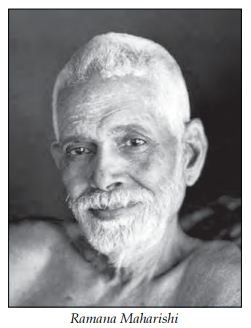
How does self-surrender come into this path of Jnana Marga as we normally and naturally take it to be the sweet and joyful merger of the little individuality of the Bhakta with the Immensity of his Beloved God Whom the Upanishad describes as rasa-swarupa (the Embodiment of Joy or sweetfulness)? Ramana Maharishi, one of the greatest and most outstanding Jnanis of the present age, always used to preach the path of self-enquiry (atmavichara) as the highest and the most direct paths to the Ultimate Reality. When sincere sadhakas (spiritual aspirants) used to express to him their helplessness in continuously pursuing the enquiry ‘Who am I’ through atma-vichara, he used to smile and say, then practise self-surrender to the Higher Power.
He used to say that there were just two paths: the path of self-enquiry (Jnana Marga) and the path of self-surrender (Bhakti Marga). Just as the aspirant in Bhakti Marga longs to merge his little individuality in the Immensity and Infinity of his Beloved God, and enjoy the bliss of union, the aspirant in Jnana Marga discovers, through self-enquiry and inwardness (antarmukhinata) which the Katha Upanishad calls avritta-chakshuh (senses and the mind turned inward) and agryaya buddhya, sukshmaya (sharpened, subtle Buddhi or higher intuitive faculty), that what he thought his individuality, his ahamkara (‘I’- ness), is in reality a myth and the Supreme Awareness, Infinite Consciousness (chaitanya) is alone real. It is not so much merger of the jivatwa (little individuality) with the Beloved God as in Bhakti Marga, but the realization of the non-difference of the Jivatman and the Paramatman. By the fire of Jnana (Knowledge of oneness) gets burnt, destroyed, the false notion engendered through ajnana (ignorance) that the Jivatman is different from Brahman.
The subtle difference, if at all, between the two Margas, Bhakti and Jnana in respect of self-surrender is that in Bhakti Marga, there is a sweet union of the individual self with the Supreme Self that the Bhakta enjoys and rejoices in, whereas in Jnana Marga, the separateness of the individual self and the Supreme Self is realized as a false notion, a myth, arising from ajnana or ignorance and there is no question of union or merger as there never was, there never is, there never will be, any separateness between the individual and the Supreme. Bhakti Marga therefore is sweet and joyful with the Bhakta ‘rejoicing and feeling exceedingly glad’ as Jesus the Christ said speaking about the imagery of the joy of union of the bride (Jivatman) with the Bridegroom (Paramatman).
On the other hand, Jnana Marga is austere and blazing—the Sun of Knowledge arising in the Jnani’s heart destroys the darkness of ignorance that is the false notion of separateness of the Jivatman and the Paramatman arising from ignorance.
Illustrations of Ramakrishna Vivekananda
We give below illustrations by Sri Ramakrishna and Swami Vivekananda (which in fact is Sri Ramakrishna’s only, as Swamiji never spoke anything but what he received from his Master, Sri Ramakrishna)— illustrations that may be understood from both the Bhakti and Jnana angles of vision, for Sri Ramakrishna and Swami Vivekananda never made any distinction between Bhakti and Jnana as both of them involve destruction of the little individuality (which Swamiji called the ‘puny ego’).
Whereas in the path of Jnana this puny ego is burnt in the conflagration of the Fire of Knowledge or destroyed in the blaze of the Sun of Knowledge, this little ego melts away, in the path of Bhakti, in loving abandon in the Infinite Reservoir of God’s Love, passionately and joyfully.
- Sri Ramakrishna’s first illustration: in the Infinite Ocean of Satchidananda, the water gets frozen into ice in several places here and there, frozen as it were by the cooling influence of Bhakti. Again, when the Sun of Jnana arises, these blocks of ice melt away into the ocean by the blazing heat of Knowledge. In either case, the freezing through Bhakti and melting by Jnana have one common feature, namely, the little individuality disappearing and the Infinitude of the Supreme Reality revealing Itself as an Unbroken, Indivisible, Homogeneous Ocean of Consciousness (Chaitanya samudra).3
- Sri Ramakrishna says:
Do you know what it is like? It is like the peeling of an onion. As you go on peeling the onion in search of a kernel, you will ultimately find that there is no kernel in the onion. Similarly, through the path of discrimination (vichara marga), if you go on searching for the ego or ‘I’ within, you will ultimately find that there is no ego or ‘I’ at all. Just like there is no kernel within the onion, there is no ‘I’ within you. It is all He (God) or Brahman.4 - The following anecdote from the life of Swami Vivekananda, besides illustrating the meaning of self-surrender we have been discussing so far, both from the points of view of Jnana and Bhakti, further show how Swami Vivekananda himself could powerfully impart the truth of self-surrender as vanishing of the ‘puny ego’, to anybody who came to him, even those absolutely uninitiated into Vedanta or any Indian philosophy or thought:
Emma Calve, was a great opera singer, a celebrity, in France, and she was intensely unhappy as most celebrities are. They live a very sad life inwardly although they are celebrated everywhere. Emma Calve was so depressed, so frustrated, did not know what to do, even thought of ending her life. Somebody told her to meet the great Indian Yogi, Swami Vivekananda, staying at Paris at that time. She made an appointment with Swamiji. At the appointed hour, she entered the room, Swamiji was in his study, didn’t even look up, but merely said, ‘O my child, what a troubled atmosphere you have brought with you. Calm down, my child! Calm down!’ She came and sat down facing Swamiji. Swamiji looked at her tenderly and compassionately, began to speak to her about the innermost secrets of her life which she had not shared with anybody. She was flabbergast, confused, dumbfounded! Was it a miracle, was it some magic? ‘Swami’, she cried out, ‘How did you know all this? Did anybody talk to you about me?’ Swamiji smiled and said, ‘Is it necessary, I can read you like an open book.’
Then he gave some spiritual advice which was more of imparting of a powerful spiritual impulse that went deep down her consciousness. He told her that she was not a small entity enslaved in a little body, she was Divine, one with Infinite Divine Source, the Infinite Reality. This spiritual impulse was so powerful that she was shaken to the very depths, about to lose her individuality.
She cried out: ‘Swamiji! You are taking away my individuality. I seem to be vanishing, I am becoming a zero!’ Swamiji was fond of poking fun at the westerners saying, ‘You Westerners are so fond of clinging to your i-nd-i-v-i-d-u-a-l-i-t-y. But you are not individuals yet, you shall be when you become universal.’ Swamiji then told her a story of a water-drop. A water-drop was falling into the ocean and the drop started crying. The ocean asked the drop, ‘Why are you crying my child?’ The water-drop answered: ‘O, I am going to lose my individuality as the drop.’ The ocean laughed and said, ‘My child, you are not going to lose your individuality as a water-drop, you are going to regain your individuality as the ocean. You were one with me and you were taken away from me by the sun’s rays. Now you are coming back to my bosom to join me and the billions and trillions of your brothers and sisters, who were little drops like you. You are not losing your individuality as the waterdrop, but regaining your real individuality as the ocean!’5
That is a great message for all of us—this message of self-surrender from the points of view of Jnana or Bhakti. In the path of Bhakti, it is not a weak, meek, powerless, helpless, servile submission to a superior Power—it is, as we have repeatedly said above, loving abandon, passionately and joyfully, by the lover, the Bhakta, in the Beloved God Who he realizes as the Infinite Reservoir of Divine Love.
We may quote a few examples of selfsurrender of the Jnana type, of the Bhakti type and of the Jnana-Bhakti type. We are doing this with trepidation, realizing the stupidity of our little minds that dare to classify and pigeon-hole the spiritual moods and attitudes of gigantic minds of extraordinary spiritual immensity, the only justification, if any, being their infinite compassion and forgiveness that match the vastness of their spiritual stature:
- Jnana type: Vyasa, Valmiki, Gaudapada, Shankaracharya, etc in the ancient times, and Ramana Maharishi, Swami Turiyananda, etc in the modern times.
- Bhakti type: Lakshmana, Vibhishana, Sri Radha, the Gopis of Vrindavan, Tulasidas, Surdas, Mirabai in the ancient times, and Swami Ramakrishnananda, Swami Shivananda (among the disciples of Sri Ramakrishna) etc in the modern times.
- Jnana-Bhakti type: Hanuman, Mahavir, Uddhava, Arjuna, Kunti Devi, Ramanujacharya, Chaitanya Mahaprabhu, etc in the ancient times and Sri Ramakrishna, Sri Sarada Devi, Swami Vivekananda, Swami Brahmananda (among the disciples of Sri Ramakrishna) in the modern times.
Swami Vivekananda’s Divine Call
Swami Vivekananda was convinced that this great message of the Schools of Vedanta and Bhakti, the message of self-abandonment, self-abnegation, selfeffacement, in the language of Bhakti, and in the language of Jnana, the realization of the Divinity of the human soul as Infinite and Absolute, as Existence-Knowledge-Bliss in its true nature (Satchidananda Swarupa) along with the realization of Oneness, Identity, of this individual divinity of the human soul with the all-pervading infinite Divinity interpenetrating all of Existence which we call the Universe, will usher in a new world Order, a new weltanchhuang (worldview), a new civilization. Swamiji therefore exhorted all to realize this Divinity within and without as one homogenous, unbroken continuum of Divinity as the ancient Rishis exhorted:
Purnamadah purnamidam purnat purnamudachyate
Purnasya purnamadaya purnamevavasishyate
That Reality [Brahman] is Full, Infinite. This Reality [the world] is Full, Infinite.
The Infinite emanating from the Infinite, Infinite Alone remains.
May we close with Swami Vivekananda’s immortal words, which is an eternal call to the Infinite Blessedness:
Call upon the sleeping soul and see how it awakes. Power will come! Glory will come! Purity will come! Greatness will come! And all that is good and excellent will come, when the sleeping soul awakens in its self-conscious activity.
Now that humankind is most stresstorn, strife-ridden, conflict-prone, may we all be blessed by listening to and responding to this call, this Divine Music of the Spheres perpetually arising from the Kingdom of Heaven that is nowhere except within the recesses of each human soul!
References
1. c.f. God Lived with Them, p.188 (ref.no.21)
2. c.f. Gospel, p.589
3. c.f. Gospel, p.148
4. c.f. Gospel, p.446
5. Life of Swami Vivekananda, 1: 449-451
Source : Vedanta Kesari, December, 2015
